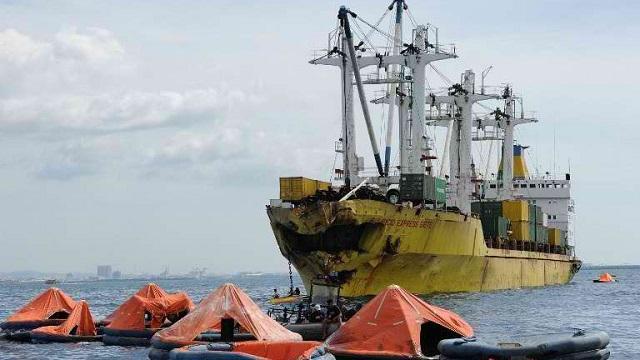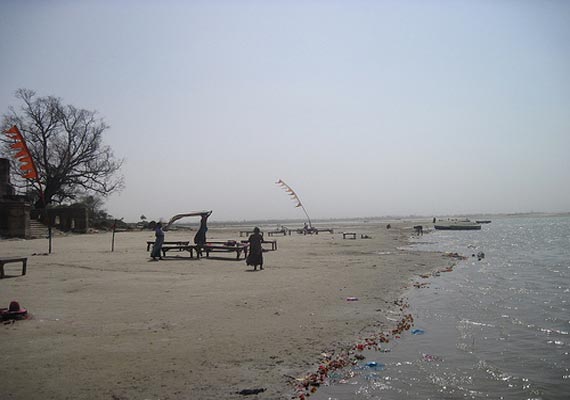
In the summer of 2005, an elderly woman with dementia left her residence in Medicine Hat, Alberta. No one knows why she left, or where she thought she was going. Exhaustive attempts to locate her were fruitless. She was declared dead, three years later. Her body was never recovered.
"Enid" was a missing person. She is said to have had an active social life. Numerous friends lived near her, visited her reasonably often, and a stepdaughter was in touch fortnightly. Yet somehow, she managed to disappear without anyone noticing an elderly woman walking alone through a relatively small city, surrounded by open plain and smaller towns, to a destination unknown.
She left family behind; some 25 people were directly affected by this one woman's disappearance.
"Samson's" family gave up looking for him after five years. He went out one night and never came back. His last known whereabouts was an ATM from which he withdrew a few hundred dollars. His banking and credit cards have not been used since. His whereabouts has never been discovered. No one knows if he is dead or alive. He and his wife were still raising their three children at the time of his disappearance.
Among law enforcement officials, the common wisdom is that 95%-98% of those who go missing reappear within 48 hours. While these statistics may provide some temporary comfort to those whose loved one has gone missing, it diminishes both the real numbers of those who go missing, and the emotional havoc such a disappearance wreaks upon family, friends and associates of the missing person. These statistics also conceal another: globally, 607 people go missing every single day, without a trace. Over a year, this totals 221,644 missing individuals; over twenty years, this totals 4,432,880 - more than the population of New Zealand, or almost the entire population of Ireland (2011 statistics).
In the broadest terms, there are two types of missing persons: those missing voluntarily and those missing involuntarily. The former include individuals who wish to 'drop out' of society for a while, often for reasons of mental health, damaged (or threatened) relationships with family or friends, financial trouble or simply desiring time to evaluate one's life course. The majority of these missing people remain local to their last known address; the one comfort they retain in self-imposed exile is a familiar environment.
These missing persons leave loved ones confused about their relationships to her/him, and therefore ambivalent upon her/his return. Loved ones may feel simultaneous joy and relief, but also mistrust and apprehension. The voluntarily missing person is often aware of the potential (or deeper) rift her/his absence may cause in former relationships; in many cases, the fear of a negative response from family or friends is a factor in such a person's decision not to return to her/ his former life.
When a voluntarily missing person is not located, loved ones often experience grief indefinitely; the individual may be eventually declared dead and his or her affairs may be settled, but there is no real closure for those s/he leaves behind. This lack of closure is, in many cases, worse than it is for those whose friend or family member has gone involuntarily missing - though the latter case usually carries with it much darker implications and outcomes.
The media has brought numerous cases of kidnapping and human trafficking to the public's attention, yet the purposes these enslaved serve are varied; forced labour, arranged marriages, prostitution rings and organized crime have all made headlines in global media. Those who are trafficked are likely to suffer reprisals if they escape and their stories are publicized. Such is the courage of those who have come forward against the wishes of their captors and, in some cases, complicit families and neighbours. Many people find it easier to deal with their missing by regarding them dead than to hold out hope for, or be given evidence of, their survival.
These stand in sharp contrast to families and friends of political detainees/ disappeared, many who are vocal in their denouncements of the repressive regimes that imprison torture and kill neighbours, family members and friends. For these, the disappeared are not a point of dishonour but a point of fighting for justice. Their missing are brave; their dead are testaments to a thirst for justice.
Still others go missing in order to preserve their own lives. Their situations arise from previous errors in judgement, sometimes crossing those involved in crime. The choice of death or disappearance (presented as a 'chance at a new life') is given. The desire to live usually coincides with the realization that the safety of one's family will be more assured without one's return to it. "Samson" made such a decision readily.
Where do 4,432,880 people go to become invisible? Many, of course, could probably be accounted for in the hundreds of thousands of unclaimed bodies which occupy the morgues of cities all over the world. Others occupy prisons,’re-education centres' and other political machines. They are in-house workers of all stripes, factory hands, and corporate slaves. They are in places not yet searched, and those in plain view. Some bodies may yet be claimed; some people may still be found alive, and returned to their families and friends. Some may retain their 'new life' and not seek reunion with those who once cared for them. Others are disposed of in various ways, still to surface, perhaps to be discovered in a shallow grave, cremated without ceremony, or cast in concrete boots.
The problem is that people still go missing. Another problem is that there is no acceptable way to track every human on the face of the earth. Reducing the number of missing persons has become a matter not for technology, governments or for corporations, but for individuals, neighbourhoods and communities who are no longer content to watch nearly 4.5 million people vanish every generation.
To start with, people can look out for each other. Neighbourhood get-togethers can facilitate those residing near each other getting acquainted and becoming aware of each other. Organizations can allow communiqués to be sent from a missing person to her/ his family, assuring them of her/ his well-being and allaying any fears of her/him being harmed, even while still gone to ground. Such modes of community outreach need be neither expensive nor time-consuming, but present. All it takes is a will to ensure that fewer people's absence goes unnoticed, and an appreciation of those around us.
Monday 26 August 2013
http://www.scoop.co.nz/stories/WO1308/S00441/4432880-missing-persons-vanished-in-past-20-years.htm











